I want to add one trimpot of 1K in my ADC board to test several analog channels. I thought of connecting two ends to VCC and GND and middle pin (wiper) to analog input. But I am not sure if I need to add any additional resistor on one of the sides to protect any possible short in case of faulty trim pot. But in such case, I guess I will not get 5V (or 0V) on extreme ends and that will be an issue for me. So my question is: Is there any possibility of defective trimpots making dead short between any two end points? Since pots are also being mechanical parts, does wear and tear cause any issue. Since resistance between ends is fixed, I am hoping that dead short may not occur and no extra safety is needed. But thought it is better to ask this forum. Any one have seen any dead short between ends?
-
no risk of short – Tony Stewart EE75 Dec 31 '17 at 17:35
-
2@TonyStewart.EEsince'75 and the Titanic was unsinkable ;) – Trevor_G Dec 31 '17 at 18:10
-
1Very little risk, however do not underestimate the capabilities of a customer wielding a screwdriver. – Spehro Pefhany Dec 31 '17 at 18:10
-
Trev, pots are clearly designed to avoid icebergs and shorts between endpoints. – Tony Stewart EE75 Dec 31 '17 at 18:38
3 Answers
It's highly unlikely that you will end up with a dead short - the typical failure mode for a trimmer or pot would be open circuit due to an oxidised wiper or broken track.
The reason you would typically see a series resistor in a potentiometer circuit is for circuits where having zero resistance between the wiper and one or other end of the track would cause issues. In your scenario where each end is connected to a supply rail and the wiper to an ADC input, this will not be an issue.
- 63,168
- 3
- 139
- 196
Augmenting Tom's answer.
Assumption here is the pot is not being over-driven. If it is, then there is the possibility that it could burn out and molten parts could cause a short.
There is also always the potential for contamination from the introduction of foreign conductive objects or fluids. (Note: Over use can cause some wear and conductive dust accumulation.)
Bad manufacture can of course also cause a short.
However, if it works out of the box, and is properly rated and kept clean and dry, risk of a short is extremely unlikely.
A look at the older open-frame type trimmer pots may allay your fears.
Figure 1. An open-frame trim-pot.
Note the insulating base (white) and the carbon track (brown) with wiper sprung against the track. (The dimple at the far side of the pot is making contact with the track and in the photo is at about mid-position.
It should be clear from the photo that end to end failure (between the two near pins) is most unlikely to be a reduction in resistance. It is far more likely that the track will fail due to excessive wear or power dissipation and that resistance end to end will increase.
If the adjuster is abused it could potentially fall in a position to short out the two end pins. This seems unlikely.
- 168,990
- 12
- 186
- 385
